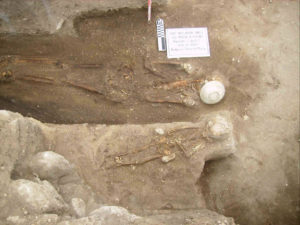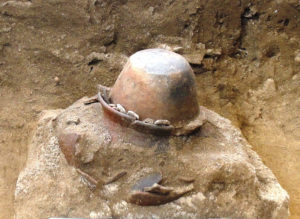
(Photo credits to Professor Jobers Reynes Bersales)
VISAYAN HISTORY
While strong Christian influences mark Filipino culture, research by the University of San Carlos (USC) showed that certain pre-colonial practices had been retained such as those that revere the dead.
USC professor, Dr. Jobers Bersales, a Cebuano archeologist who dedicated his life to the study of Visayan history and culture said Filipinos, especially pre-colonial Visayans, had a complex tradition of religion and death.
Bersales dedicated much of his study to learning about the Visayan concept of the afterlife which he considers to be just as unique as the life after death concepts of Egyptians, Indians, and Greeks.
“We need to understand this past culture as modern Cebuanos because we need to understand what our current practices mean and where they come from,” he said.
Bersales said that every story of Visayan afterlife always goes back to the deities in Philippine mythology called “diwatas” and the ancestor spirits or “anitos.”
Ancient Visayans believed in the principle that everything in the world had a spirit.

A jar situated on top of an infant’s remains uncovered during a 2012 excavation at San Remigio town. (Photo credits to Professor Jobers Reynes Bersales)
According to Bersales this indicated that they were not pagans but were in fact, animists, like their Malayan and Japanese neighbors.
Bersales said that the present-day stories told by the elders about supernatural creatures living in trees, ant hills, and rocks come from the belief of ancient Visayans that diwatas guard nature and the deities need the sacrifice of warm-blooded creatures to be constantly appeased.
Ancient Visayans also believed that diwatas and other supernatural beings lived in the upper-world or what Christians would call as heaven while the demons and monsters lived in the lower-world which is known to Christians as hell.
These beings communicate with the living in the “middle world” and may hold captive the people they favor or hate, according to the belief.
Bersales recently spoke in a life and death forum entitled “ Panaw” held at the Casa Gorordo Museum where he regaled the audience with his study which showed that from the basic animist religion of ancient Filipinos surfaced a complex burial tradition that determined the social status and roles of those who died.
Bernales said that around Cebu particularly in the town of Boljoon, Mandaue City, and Mactan Island, there were excavations of ancient Visayans buried with artifacts like pottery, gold, and jewelry indicating the dead’s social status.
Most of those buried were placed in coffins made of carved wood for the datus and bamboos for peasants.
It was believed that the coffin or “lungon” served as a vessel to get to the afterlife or “saad” where the dead would be met by the goddess,
Badadum, and relatives who had earlier died.
A hollow tube earring near a male skull uncovered during a 2008 excavation in Boljoon town. (Photo credits to Professor Jobers Reynes Bersales)
According to the belief, Badadum would then determine through the dead’s adornments whether or not he could enter the afterlife.
With this in mind, ancient Visayans adorned their dead with all kinds of worldly possessions and created a system of mourning, said Bersales.
He added that the basic mourning system of the ancient times mirrored a little bit of today’s mourning practices.
Back then, grieving families marked their loss by closing windows at home to show that they were in deep mourning.
But while the family fasted, visitors from the village kept the spirits up by feasting at the wake.
Bersales pointed out that this was similar to present-day wakes when visitors are constantly served with food and drinks while some play cards or simply chit chat with relatives and friends that they have not seen in a while.
Two bowls, one of which covered the top of the skeletal remains found in Boljoon town. (Photo credits to Professor Jobers Reynes Bersales)
In pre-colonial Visayas, widows and widowers shaved their heads so their hair could be buried along with their spouses as a gesture of love and affection.
The act also indicated that marriage was considered a sacred contract by ancient Visayans, said Bersales.
Infants who died were placed in jars; while the infant sons of datus were often left with a living slave to watch over the grave and tend the land around it.
Bernales told a story of how a datu died in Bohol and the village sacrificed 70 slaves so that they could serve the datu in the afterlife.
“Our ancestors valued social status so much that seventy people had to die for a datu so that he will be comfortable in the afterlife,” Bernales said.
Although there are no more human sacrifices in the present time, Bersales noted that rich Filipinos are still able to show their wealth even in death.
The historian pointed out that many rich families bury their dead in mausoleums built like temples or houses with creative architecture; while the working class and the marginalized sector end up in public cemeteries with small tombs.
According to Bersales, ancient Visayan culture survived in ways that most Cebuanos do not understand.
It was high time, he said, for the local culture to be incorporated into the educational system of schools in Cebu.
“We need to offer more about Cebuano history and there needs to be more books. We need to preserve our local history,” added Bersales.

